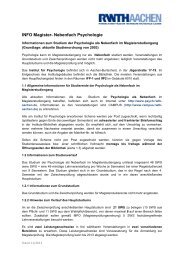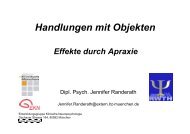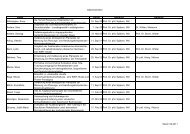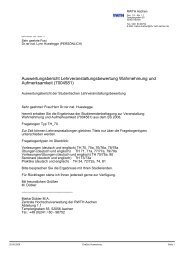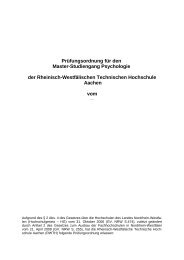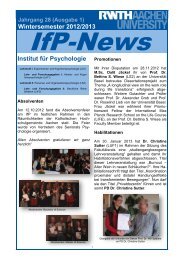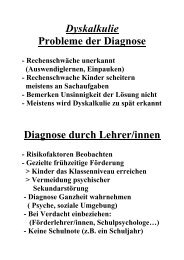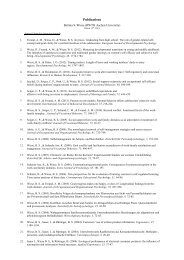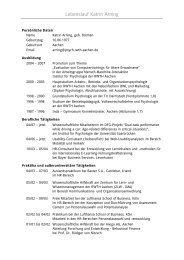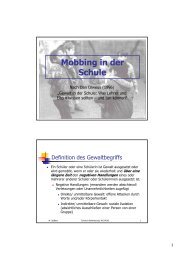Crossmodal Action 1 Crossmodal Action Selection - RWTH Aachen ...
Crossmodal Action 1 Crossmodal Action Selection - RWTH Aachen ...
Crossmodal Action 1 Crossmodal Action Selection - RWTH Aachen ...
You also want an ePaper? Increase the reach of your titles
YUMPU automatically turns print PDFs into web optimized ePapers that Google loves.
<strong>Crossmodal</strong> <strong>Action</strong> 12<br />
of task condition and temporal task overlap, and also the three-way interaction of task<br />
condition, modality, and temporal task overlap was not significant, F < 1 (see Figure 1).<br />
Because of the pronounced differences in single-task RTs across groups, we<br />
additionally computed proportional dual-task costs for each modality and group. Although the<br />
amount of proportional dual-task costs was overall higher for the manual responses (62%) as<br />
compared to the saccades (25%), F(1,22) = 11.01, p = .003, η p ² = .334, there was neither a<br />
significant difference across groups, F(1,22) = 2.58, p > .10, nor a significant interaction,<br />
F(1,22) = 2.04, p > .10. Mean dual-task inter-response intervals were greater in the small<br />
overlap group as compared with the large overlap group (595 ms vs. 305 ms), t(22) = 2.94, p<br />
= .008.<br />
Regarding errors, we found a significant main effect of modality, F(1,22) = 12.56, p =<br />
.002, η p ² = .36, indicating more errors for saccades (7.4%) compared to manual responses<br />
(2.5%). Additionally, there was a significant main effect of task condition, F(1,22) = 6.45, p =<br />
.019, η p ² = .23, indicating more errors in dual-task conditions (5.9%) as compared with<br />
single-task conditions (4.0%). Errors occurred more often in the small overlap group (7.0%)<br />
than in the large overlap group (2.9%), F(1,22) = 8.99, p = .007, η p ² = .29, indicating a<br />
performance benefit for the latter.<br />
There was no significant interaction of modality and task condition, F < 1. The<br />
difference in the amount of errors between saccades and manual responses was greater in the<br />
small overlap group (11.2% vs. 2.8%) compared to the large overlap group (3.5% vs. 2.2%),<br />
F(1,22) = 6.51, p = .018, η p ² = .23, but there was no significant difference in dual-task costs<br />
between groups, F < 1, nor a significant three-way interaction of task condition, modality, and<br />
temporal task overlap, F(1,22) = 1.25, p > .05.<br />
The saccade was initiated earlier than the manual response in 98.9% of the dual-task<br />
trials in the small overlap group vs. 90.9% in the large overlap group, t(22) = 2.49, p = .021.<br />
Eliminating reversals of this sequence did not change the pattern of results, and there was still



